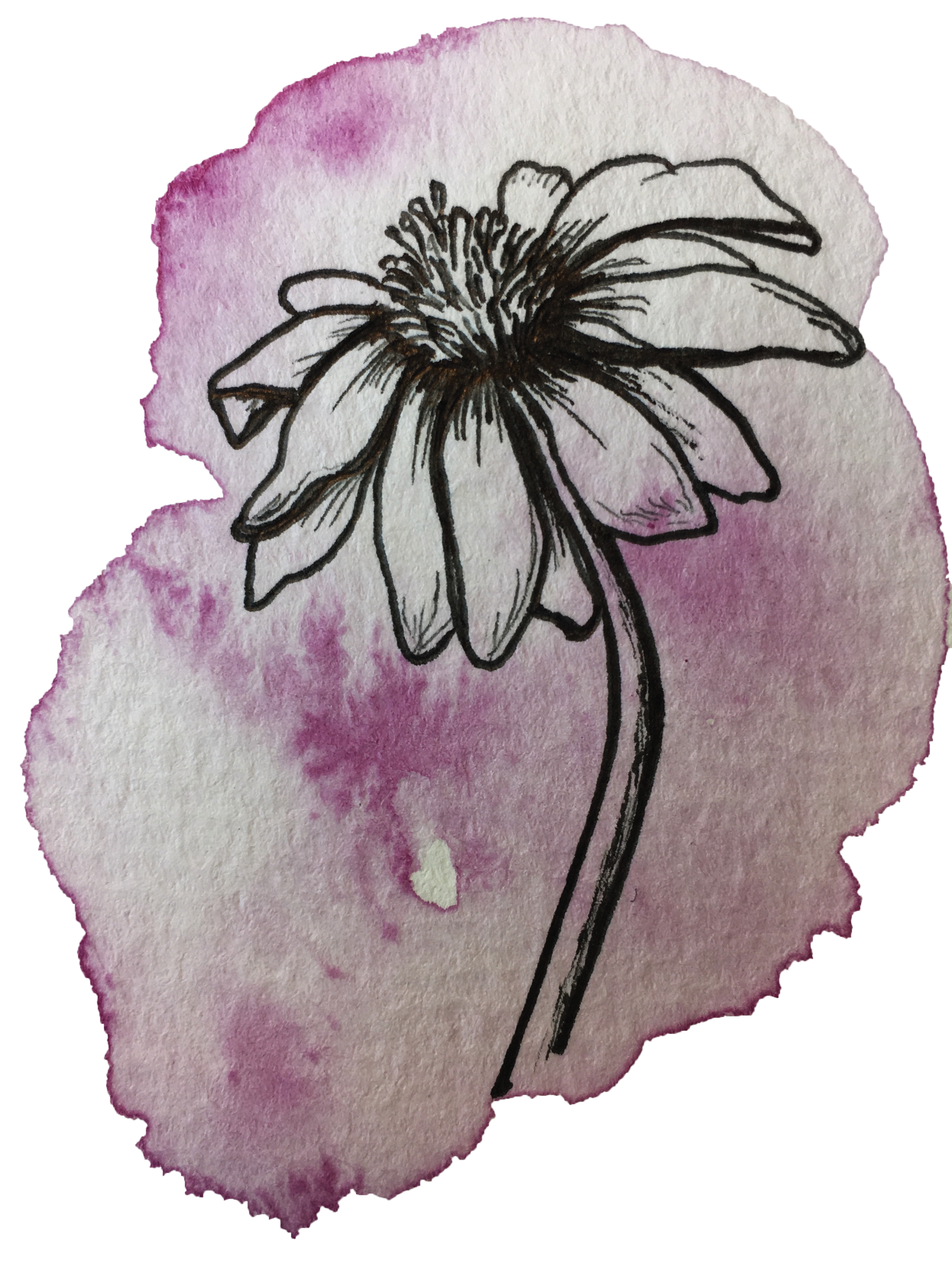Imagine walking into a house and smelling warm cookies. First, you know that you smell something . Then, you recognize the scent as freshly baked cookies. Immediately, your brain begins making connections to your past cookie experiences: maybe you suddenly remember your grandparents or the holidays, maybe your mouth waters a little, or maybe you remember that one time your brother dropped a cookie in the kitchen and you accidentally stepped on it in your favorite socks. It’s easy to imagine why a sense of smell could be beneficial for survival. In order to survive, animals need to be able to find food and recognize whether other animals are a threat. Both of these processes are rooted in how their noses interact with scent molecules and how the brain stores the relevant situational information for later use. As humans, we frequently notice this phenomenon when we smell something that triggers a strong emotion or memory of a different time, especially if we cannot place the scent but know it reminds us of something specific. Cells in the inner nose are always binding to new molecules in the air around us and sending signals to the brain, even when we don’t notice it. This is what allows us to recall past situations in detail when we smell scents associated with them. In the past twenty years, neuroscientists have discovered many intriguing lines of evidence to help explain the powerful connection between smells and memories.

When a person thinks of a smell, what they are really thinking of are molecules in the air that the brain only later interprets as a distinct smell. Freshly baked cookies coming out of the oven emit a steam that carries certain cookie-associated molecules to a person’s nose for processing. Flowers in bloom release pleasing scent molecules into the air that help attract pollinators. Because sense of smell relies on molecular interactions, it falls into the category of chemosensing (chemical-sensing). Hearing and seeing are not considered chemosenses because they involve vibratory wave mechanisms as opposed to a molecule binding to a receptor. Smell is the oldest of all the senses, much older than our sense of touch or taste [1]. Before life was as evolved, and the senses were beginning to develop, organisms that couldn’t see or hear were guided to food by following chemical trails of molecules in the air or water. Over time, the ability to learn which molecules meant food and which meant threats led to the evolution of the complex olfactory systems present today. At the core of these systems are two main components: how receptors in the nose pick-up and send signals to the brain, and how the brain stores this information in the form of a smell-linked memory [1].
The Smell Receptors
For years, scientists suspected that the smelling process began in the nose when molecules in the air bound to special receptor proteins attached to neurons on the nose’s inner surface. But they had no idea how many of these receptor proteins existed or how they eventually led to the transmission of information to the brain. Now that the entire human genome has been sequenced, researchers have discovered that the family of genes encoding the smell receptor proteins is the largest of all known human gene families [2]. Recent research has suggested that, like their gene family, the smell receptor proteins are far more complex than originally thought. It is now believed that humans have the ability to identify over a trillion scents, almost a hundred million times more than previous research had suggested [3]. The shape of the receptor proteins exposed to the air on the interior surface of the nose can bind so precisely to smell molecules that they can even distinguish between isomers, molecules made of the same atoms but with different spatial arrangements [4]. Several past experiments have shown that there may even be an individual receptor protein for every single smell humans are able to recognize [5].

These receptor proteins are found on the surface of neurons known as olfactory receptor neurons that extend from the inside of the nose directly into the brain [6]. Because a smell is often not just one type of molecule in the air, but rather several that combine to create the overall scents we perceive, there are usually several receptor neurons sending signals to the brain during any one smelling experience. The incredible diversity of smell receptor proteins, and the resultant signals sent by their corresponding neurons, calls for several theories to explain how the brain is able to so accurately sort and store information from each smell, especially those encountered long ago.

Into the Brain
In order for smells to be useful, each of the receptor neurons on the nose’s inner surface must send information about the smell molecule into the brain for processing and storage. This requires a physical connection between the nose and the brain, which exists in the form of the olfactory neurons that travel the full distance [6]. These neurons undergo a process of chemical changes after the initial binding of the smell molecule that leads to an electrical signal being sent from the nose to an area of the brain known as the olfactory bulb, where the process of sorting the smell and storing it as a memory begins.
The specific areas of the brain the olfactory receptor neurons activate during a smell experience are currently thought to give the brain crucial information about what kind of smell is present [7]. Further research has shown that there are intermediate levels of signal organization wherein the olfactory neural connections are rewired several times along their path into the brain, modulating the processing of the smells [8]. As soon as the scent signal reaches the surface of the brain, it enters a region known as the olfactory bulb, within structures known as the glomeruli [9]. A glomerulus is a spherical structure that connects the ends of the initial olfactory neurons to the neuron bundles that will carry the signals even deeper into the brain. The neurons from the nose’s inner surface activate different glomeruli as the result of their different physical connections to the brain, leading to the multiple varied activation pathways that follow.
The neurons that the smell signals get passed to, also located in the olfactory bulb, are part of a specific cell family known as the tufted and mitral cells [9]. These cells are able to modulate the strength of the signal coming from the initial olfactory nerves through a process known as lateral inhibition, also seen in many of the brain’s other sensory-processing centers. During this process, the neuron essentially stops the signal from “leaking” to surrounding neurons that may be sending similar types of information in parallel [10]. This inhibition is critical because research has shown it may be responsible for allowing each neuron to send slightly different information while maintaining signal strength and integrity, lending a greater amount of detail and complexity to the resultant memory. This is also relevant because these different pathways preferentially transmit certain combinations of smell signals from the glomeruli to different regions of the brain’s olfactory cortex [10]. It is suspected that the regions of the brain activated by specific smells – regions whose exact locations vary from individual to individual – are involved in a person’s inherent like or dislike of certain scents, though more research is needed to further explore the neural basis of this claim [8].
The areas of the brain activated after the initial organizational processes are the amygdala and hippocampus, both part of the limbic system. This is interesting because all other sensory information (taste, touch, sight, and sound), once initially received by the brain causes increased activity in the thalamus, thought to be the main processing center for sensory information. But the neurons carrying the signals induced by smells bypass this traditional processing center, and instead travel to two regions of the brain that have long been associated with emotion, behavior, and memory [11]. This physical connection between signals originating in the nose and the emotion-and-memory center of the brain gave scientists a big clue as to why smells are so inextricably linked to our memories of when we experience them. But it wasn’t until relatively recently that researchers began to quantitatively establish the link between emotional environments, the olfactory system, and our combined memories of both stimuli. Research is barely now at the point of trying to explain the mechanisms behind this complex interaction, but each study that demonstrates a link between the above factors in a novel way gives scientists insight into what may be going on.
Smell and Emotion
Nearly every person has experienced a time when a smell has triggered a detailed memory with some kind of strong emotional association. The relationship between scent-linked brain activity and memory centers like the hippocampus and amygdala greatly helped scientists explain why scents are capable of evoking memories and emotions. But it was recently discovered that the reverse may be true as well; emotional stimuli may be influencing our perception of smell [12]. In one study, researchers demonstrated a correlation between higher induced-stress levels and a participant’s description of an odor as unpleasant when they had originally described it as neutral. This study reveals that when the same brain region processes an emotion and a scent, the lasting imprint of the moment consists of both factors. Particularly interesting is that both factors appear to interact with each other to influence the final memory, and that memories including both an emotional and scent component appear to last longer than those consisting of only one or the other, even when the scent is only subconsciously perceived [13].
In a separate but related study, scientists exposed viewers to a film while they were also unknowingly exposed to different kinds of sensory stimuli in the form of either an odor, a light filter, or a specific soundtrack. When asked to recall the film, the odor-exposed group was able to recall the film in more detail and also rated themselves as having the most emotional response to the film [13]. These results hint at not only smell’s effect on emotional response levels, but also the effect that the heightened response can have on the lasting power of the memory. These experiments and others like them seek to provide evidence that the physical linkage between smell and emotion processing is not a coincidence. Scientists studying olfaction believe that the strength of the memory encoded by this multifunctional brain region has a crucial evolutionary significance that still has yet to be fully revealed [1].

Implications
While we know drastically more about the neurological architecture that drives the connection between smells and memories, we are only now beginning to discover the depth and implications of this fundamental connection. As science advances and we learn more about the structure of memories, our ability to describe the role of scent in the process of memory formation will improve exponentially. In the future, this could enable scientists to both explain and expand upon aroma-based therapies, originally used only in naturopathic settings completely separate from Western medicine. Now, aromatherapy is being studied for use in the treatment of dementia and other memory-linked neurodegenerative diseases due to the increasing ability of doctors to use scent to access the deep smell-memory linkage [14]. Research published within the past year has indicated that the unique and rare ability of the olfactory neurons to regenerate themselves may be able to create a network of differently-aged neurons, each sending the same signal in slightly different ways. [15, 16]. This would add a new layer to the complexity of the memory-scent linkage: the dimension of time. Each layer of the relationship we unravel brings us closer to understanding how the brain can form memories that are highly-specific, long-lasting, and emotionally-dense: the kind of memories that are the cornerstone of what makes us human.
Sources:
- Hoover, K. C. (2010). Smell with inspiration: The evolutionary significance of olfaction. American Journal of Physical Anthropology, 143(S51), 63-74. doi:10.1002/ajpa.21441
- Olender, T., et al. (2008). Update on the olfactory receptor (OR) gene superfamily. Human Genomics, 3(1), 87. doi:10.1186/1479-7364-3-1-87
- Bushdid, C., et al. (2014). Humans Can Discriminate More than 1 Trillion Olfactory Stimuli. Science, 343(6177), 1370-1372. doi:10.1126/science.1249168
- Winska, K., et al. Isomers and Odor or Nose as Stereochemist. CHEMIK, 68(2), 83-90.
- Axel, R. (2006). The Molecular Logic Of Smell. Scientific American, 16(3s), 68-75. doi:10.1038/scientificamerican0906-68sp
- Ghosh, S., et al. (2011). Sensory maps in the olfactory cortex defined by long-range viral tracing of single neurons. Nature, 472(7342), 217-220. doi:10.1038/nature09945
- Weiss, T., et al. (2016). From Nose to Brain: Un-Sensed Electrical Currents Applied in the Nose Alter Activity in Deep Brain Structures. Cerebral Cortex, 26(11), 4180-4191. doi:10.1093/cercor/bhw222
- Miyamichi, K., et al. (2010). Cortical representations of olfactory input by trans-synaptic tracing. Nature, 472(7342), 191-196. doi:10.1038/nature09714
- Sahay, A., et al. (2011). Pattern Separation: A Common Function for New Neurons in Hippocampus and Olfactory Bulb. Neuron, 70(4), 582-588. doi:10.1016/j.neuron.2011.05.012
- Shmuel, R., et al. (2019). Strong, weak and neuron type dependent lateral inhibition in the olfactory bulb. Scientific Reports, 9(1). doi:10.1038/s41598-018-38151-9
- Roxo, M. R., Franceschini, P. R., Zubaran, C., Kleber, F. D., & Sander, J. W. (2011). The Limbic System Conception and Its Historical Evolution. The Scientific World JOURNAL, 11, 2427-2440. doi:10.1100/2011/157150
- Krusemark, E. A., et al. (2013). When the Sense of Smell Meets Emotion: Anxiety-State-Dependent Olfactory Processing and Neural Circuitry Adaptation. Journal of Neuroscience, 33(39), 15324-15332. doi:10.1523/jneurosci.1835-13.2013
- Toffolo, Marieke B. J., et al. “Proust Revisited: Odours as Triggers of Aversive Memories.” Cognition & Emotion, vol. 26, no. 1, 2012, pp. 83–92. doi:10.1080/02699931.2011.555475.
- Yoshiyama, K., Arita, H., & Suzuki, J. (2015). The Effect of Aroma Hand Massage Therapy for Dementia Patients. Integrative Medicine Research, 4(1), 93-94. doi:10.1016/j.imr.2015.04.151
- Meunier, D., Fonlupt, P., Saive, A., Plailly, J., Ravel, N., & Royet, J. (2014). Modular structure of functional networks in olfactory memory. NeuroImage, 95, 264-275. doi:10.1016/j.neuroimage.2014.03.041
- Wu, Y., et al. (2018). A Population of Navigator Neurons Is Essential for Olfactory Map Formation during the Critical Period. Neuron, 100(5). doi:10.1016/j.neuron.2018.09.051
